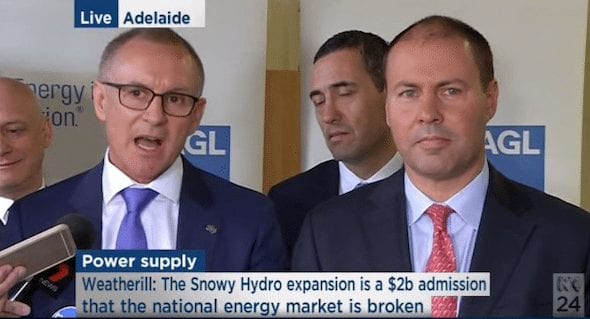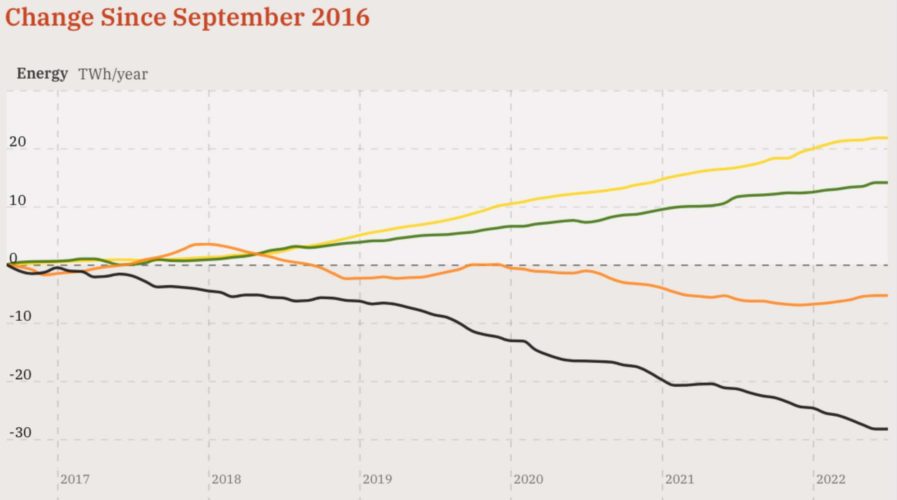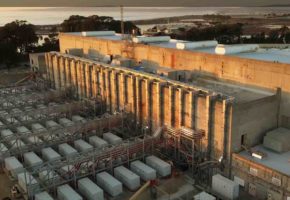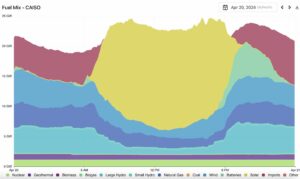It was the blackout that launched a thousand headlines, a culture war against renewables, the Finkel Review, the Energy Security Board, the Hornsdale Big Battery, Snowy 2.0, multiple court battles and one of the most biting political slap downs ever seen.
Most of all, the state-wide blackout in South Australia, exactly six years ago today, actually accelerated the switch to renewables that has made the state the world’s leader in the uptake and share of wind and solar – now at more than 65 per cent of state demand over the last 12 months.
Remarkably, the state still does not have a significant amount of storage.
It has the Hornsdale Power Reserve, aka the Tesla big battery – sparked in part by a twitter exchange between Mike Cannon-Brookes and Elon Musk – which changed the thinking about battery storage in a dramatic way, and a handful of others. But more are planned.
The state’s renewables share should reach around 100 per cent over the next five years, as the new transmission link to NSW is completed, as more huge wind and solar projects come online, and as the market operator continues to learn how to manage a grid dominated by inverter based technology rather than spinning machines.
It is one of the big ironies of the blackout. The naysayers insisted it was the end of the renewables experiment. Instead, South Australia is leading the world in showing how the transition to an inverter based grid can be done.
These two graphs below, prepared by Simon Holmes a Court using data from OpenNEM, provide an interesting illustration of how the energy mix has changes so rapidly in the last six yers, despite all the naysayers in the federal Coalition, the Murdoch media, and elsewhere.
And, of course, our main picture shows the moment when then South Australia premier Jay Weatherill took then energy minister Josh “when the sun don’t shine” Frydenberg to task over the government’s response to the blackout.
Weatherill and former AGL CEO Andy Vesey (to the left) are no longer in their roles and are now working for iron ore billionaire and green hydrogen promoter Andrew Forrest.
Frydenberg lost his seat at the last election and does not work for Forrest, as far as we know. Only energy minister Tom Koutsantonis (to the right at rear), is back in his same job, albeit after a four year absence while the local state Liberals ran the show.












